When I was 20 years old, I owned a Pontiac Trans Am. Of course, it was bright red because, at that age, I wanted something flashy. The car also had a loud dual exhaust system to announce my arrival (an important feature when you’re young).
But there was a problem—the Trans Am suffered from a slight misfire at idle. When I owned the car, I was an apprentice automotive technician who didn’t know much. So, in an attempt to fix the issue, I replaced a few parts, such as the spark plugs, but nothing I tried worked. I was too young and too green to have the diagnostic skills needed to remedy the concern.
Also, because the misfire was so minor, it didn’t trigger the check engine light. Consequently, I opted to ignore the problem—despite the fact that my car’s exhaust smelled like rotten eggs.

Ah, to be young and naive. I let the misfire go for several months and, eventually, it took out my catalytic converters.
You see, the thing with catalytic converters is that they often experience overheating and premature failure due to engine performance problems, such as a misfire.
The moral of the story is: Don’t ignore engine performance problems the way I did when I was younger. If you do, you may end up destroying your catalytic converters.
What are the Symptoms of a Bad Catalytic Converter?
Check engine light turns on
Usually, an illuminated check engine light is the first and only sign of a bad catalytic converter. When the light pops on, your car’s engine control module (ECM) will also store a diagnostic trouble code (often a P0420 code) in its memory.
Poor engine performance
In some cases, the catalytic converter may become clogged or restricted, creating excessive exhaust backpressure. That chokes the engine, leading to performance problems such as lack of power and stalling.

Car won’t start
If the catalytic converter is severely restricted, it can create enough exhaust backpressure to prevent the engine from starting.
Failed emissions test
A catalytic converter’s job is to clean up the harmful emissions your car’s engine produces. As such, a bad converter can easily cause your vehicle to fail a state emissions test.
What Does a Catalytic Converter Do?

The catalytic converter—also referred to as a “cat”—is an emissions control device that transforms hydrocarbons, carbon monoxide and oxides of nitrogen into harmless CO2 and water. All modern cars have one or more catalytic converters located in the exhaust system.
How does the catalytic converter work its magic? The device contains precious metals, such as platinum, that create a type of chemical reaction, called a catalyst. It’s this reaction that cleans up the toxic gases leaving your car’s engine.
It’s also worth noting that, typically, there are oxygen sensors located near both ends of the catalytic converter. Your car’s ECM monitors the sensor located near the converter’s outlet (referred to as the “downstream” oxygen sensor) to gauge the efficiency of the catalytic converter. If from the signal, the module determines that the cat isn’t doing its job, it will turn on the check engine light.
What to Do If You Think You Have a Faulty Catalytic Converter
A faulty catalytic converter is bad for the environment and, in some cases, it can cause engine performance problems. That means you should replace a faulty catalytic converter as soon as possible.
How to Replace a Catalytic Converter

Now we get to the fun part: catalytic converter replacement. Are you ready to grab some tools and get dirty? Good.
Although some catalytic converters are integrated with the exhaust manifold, we’re not going to cover that type of converter here. Nor are we going to discuss converters that are welded into place. Instead, we’re going to focus on bolt-in converters that are located between the exhaust manifold and exhaust pipe (or muffler).
Before we start, keep in mind that all vehicles are different. Be sure to follow the repair information for your specific application. Repair manuals, such as those from Chilton, are useful, but an ALLDATA subscription is even better.
ALLDATA has single-vehicle subscriptions for DIYers that provide detailed factory repair information.
The tools needed to replace a catalytic converter can vary, depending on what type of vehicle you have. But in general, you’ll need:
- Anti-seize
- Jack and jack stands
- Oxygen sensor wrench or socket (optional)
- Penetrating oil
- Pry bar and/or dead-blow hammer
- Ratchet, appropriate size sockets and wrenches
- Safety glasses or protective goggles
- Scan tool or code reader (optional)
- Torque wrench
Note: The following are general guidelines for educational and entertainment purposes only. Consult your vehicle’s factory information for specific repair instructions and recommended safety procedures.
How to Remove a Catalytic Converter

Exhaust components can get extremely rusty, so it’s a good idea to apply penetrating oil to all of the fasteners holding the converter and heat shield in place. The oxygen sensor threads should receive some penetrating oil as well. Let the oil soak in overnight before you start working on your car.
1. Put on your safety glasses or protective goggles. Make sure your eye protection wraps around the side of your face, as rust and debris from the exhaust can easily get in your eyes.
2. Safely raise and support the vehicle using a jack and jack stands. Chock the rear wheels and set the parking brake.
Warning: Make sure the engine and exhaust system are cool before proceeding. Do not service the exhaust system while it is still hot. Touching a hot exhaust can cause severe personal injury.
3. Disconnect the electrical connector(s) going to the oxygen sensor(s).

4. Remove the oxygen sensor(s) using the correct size oxygen sensor wrench. You can also choose to remove the sensor(s) once the converter is out of the vehicle, if that’s easier.
5. Remove the fasteners securing the heat shield. Then remove the heat shield.
6. Remove the fasteners securing the catalytic converter to the exhaust pipe.
Note: If the catalytic converter is large, you should support it and/or have an assistant help you steady it before removing the retaining fasteners.
7. Remove the fasteners securing the catalytic converter to the exhaust manifold.
8. Remove the catalytic converter from its rubber hanger(s).

9. Remove the catalytic converter and corresponding gaskets. Have an assistant help you if the converter is large. Also, if the converter is stubborn, you may need to gently pry it away from the other exhaust components or tap on it with a dead-blow hammer.
Note: If the catalytic converter fasteners don’t come loose or they break off during removal, you may need to bring your car to a professional for repair.
How to Install a Catalytic Converter

1. Compare the new catalytic converter to the old catalytic converter to ensure that they are the same design. Also, be sure that you know whether your vehicle is designed for California or Federal emissions (typically, this information is listed on a decal on the underside of the hood). The new converter must match your car’s emissions standards.
2. Apply a light coat of anti-seize to the threads of the oxygen sensor(s). Then, install the oxygen sensor(s) into the converter by hand. If possible, use a torque wrench to tighten the sensor to the manufacturer’s specification. It’s easy to damage the oxygen sensor threads, so be careful.

3. Clean the gasket mating surface on both the exhaust manifold and exhaust pipe.
4. Install a new gasket between the catalytic converter and exhaust manifold. Then, loosely install the bolts that secure the catalytic converter to the exhaust manifold. Do not tighten the bolts down completely at this time.
Note: If the catalytic converter is large, you should support it and/or have an assistant help you steady it during the installation process.

5. Install a new gasket between the catalytic converter and exhaust pipe. Use a torque wrench to tighten the converter-to-exhaust pipe fasteners to the manufacturer’s specification.
6. Use a torque wrench to tighten the converter-to-manifold fasteners to the manufacturer’s specification.
7. Push the catalytic converter back into the rubber hanger.
8. Reinstall the heat shield. Use a torque wrench to tighten the retaining fasteners to the manufacturer’s specification.
9. Reconnect the electrical connector(s) going to the oxygen sensor(s).
10. Safely remove the jack stands and lower the vehicle.
11. Use a scan tool or code reader to clear any diagnostic trouble codes set by the original catalytic converter. If you don’t clear the codes, you will have to wait for the control module to run its system self-tests before the check engine light will extinguish.
Many experts recommend that new catalytic converters undergo a “break-in” procedure. According to the publication, Auto Service Professional, to break-in a converter you should:
- Start the engine and let it idle.
- Allow the engine to reach its normal operating temperature, then let it idle for five minutes.
- Increase the idle speed to 2,500 rpm and hold it there for two minutes.
- Allow the engine to cool down.
Catalytic Converter Replacement Cost

Catalytic converters are expensive. If you decide to have a professional replace your catalytic converter, expect to pay anywhere from around $500 to upwards of $2,000. Exactly how much the job costs will depend on many factors, including the type of vehicle you have.
Should you decide to tackle the job yourself, expect to pay anywhere from approximately $100 to over $1,000 for a replacement catalytic converter. Once again, exactly how much the part may cost will depend on many factors, including the type of vehicle you have.
Sometimes, you’ll find universal catalytic converters that are relatively inexpensive. The problem is, typically, those components have to be welded or clamped into place, and that makes replacement a lot more difficult.
Stick with a direct-fit converter—you’ll be happy you did.
Frequently Asked Questions
How long can you drive with a bad catalytic converter?
The answer depends on how the converter failed. If the converter is clogged, it can create enough backpressure to cause your engine to run rough, stall, and lack power (obviously, you can’t continue to drive like that). In some cases, the problem can even be severe enough to prevent your car from starting.
On the other hand, if the catalytic converter is worn out but not clogged, technically, you could keep driving for a long time.
How do you unclog a catalytic converter?
There is an array of products and methods that claim to unclog a plugged-up catalytic converter. And while some of these approaches may work, many of them will not. The only foolproof way to address the problem of a clogged catalytic converter is to replace it with a new one.
How long does a catalytic converter last?
In many cases, a catalytic converter will last the life of the vehicle, as long as the engine is properly maintained. Typically, you can expect to get at least 10 years out of nearly all catalytic converters.
How much does a catalytic converter cost?
The cost of replacing a catalytic converter will vary, depending on the year, make, and model of the vehicle. On average, however, you can expect to pay between $500 to upwards of $2,000 to have a professional replace your car’s catalytic converter.
Where to Get a New Catalytic Converter for Your Vehicle
You can drive your car around all day with a bad catalytic converter, but you can expect sluggish performance from your engine until you fix the issue. Don’t put off having to replace a bad catalytic converter, and order a top-notch replacement here at CarParts.com as soon as possible.
We have a great selection of OE-grade cat-cons that passed the highest quality control standards from the most trusted names in the industry. Our catalytic converters are built to match your vehicle’s specifications, taking the guesswork out of finding one that fits right in.
On hand and ready to ship, our cat-cons are built using only the finest materials available, so you can rest assured that you’re getting one that’s built to last. Find the right cat-con for your ride in a matter of minutes. Enter your vehicle’s year, make, and model into our vehicle selector to start browsing our catalog, and use the search filters to narrow down the results according to your preferences.
Never go over budget when you shop from us. All our products come with a lifetime replacement and low-price guarantee to help you get the best value for your money. Shop now!
Products Mentioned in this Guide
Shop this Project



Any information provided on this Website is for informational purposes only and is not intended to replace consultation with a professional mechanic. The accuracy and timeliness of the information may change from the time of publication.


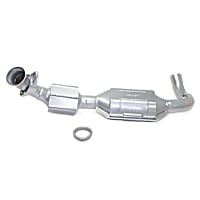 Catalytic Converter
Catalytic Converter
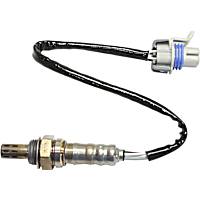 Oxygen Sensor
Oxygen Sensor

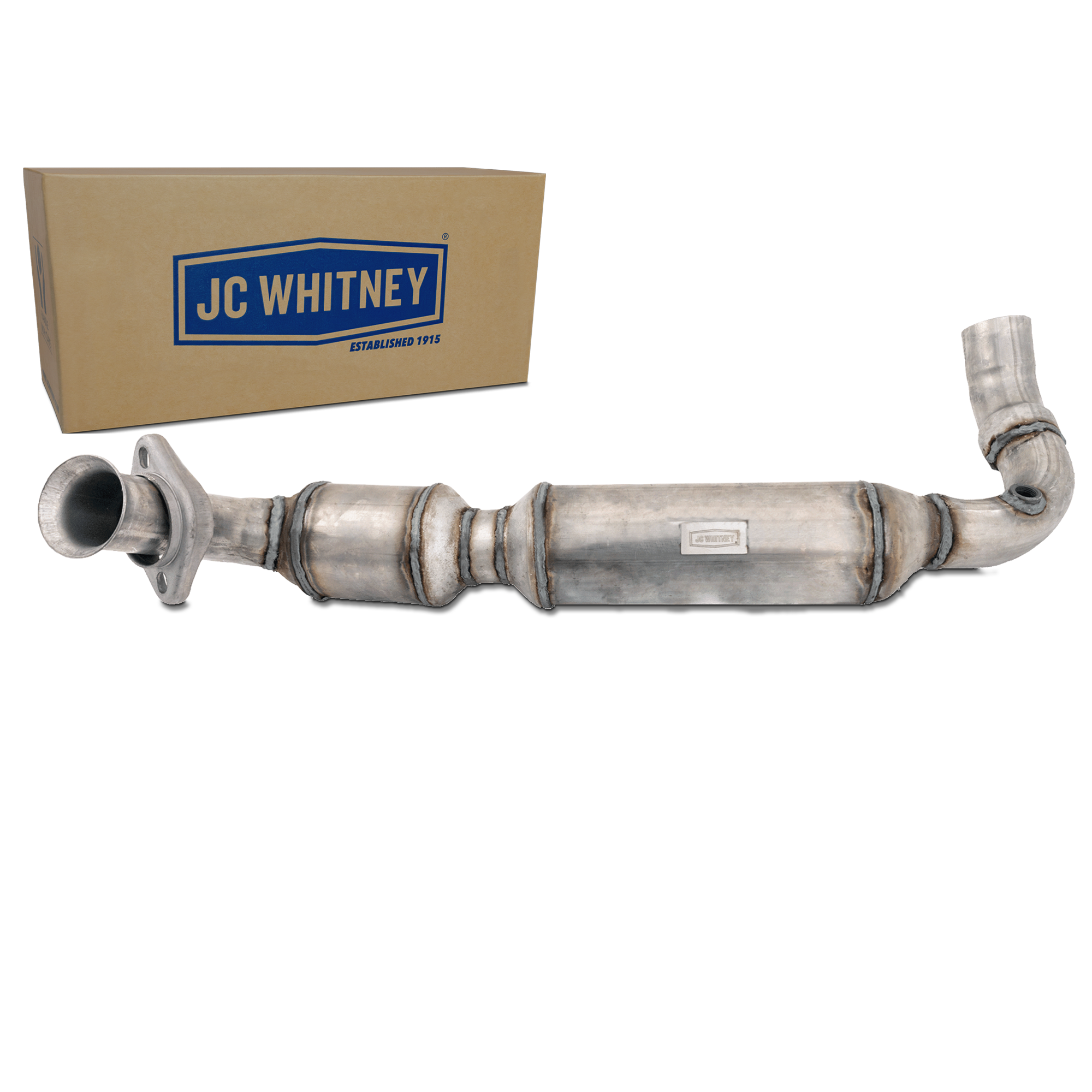
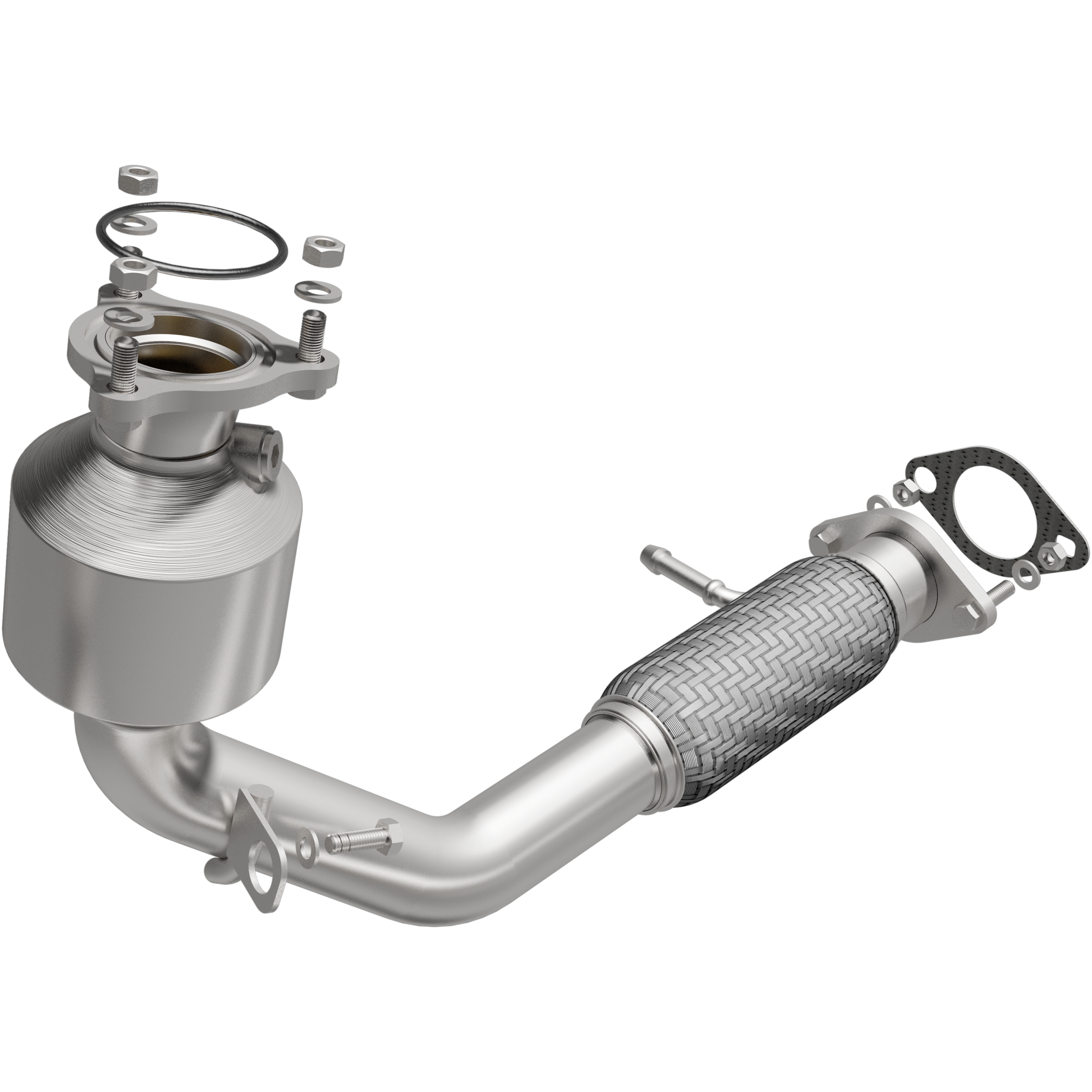




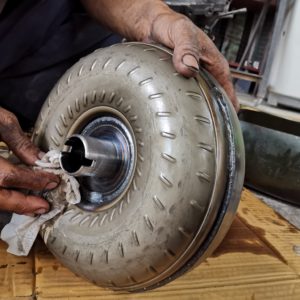























Great article, but if the “cat converter” last the life of the vehicle would it also be helpful for some clarity into why it got clogged or failed? I know you stated a poor running engine, but thats so general to someone like myself.
Okay, ill be honest, I’ve been having some major issues with my 2017 Honda Civic touring which I also use for rideshare on the Uber and Lyft platforms. Needless to say issues like this can make the job less favorable in my current situation out here. I have not been able to work over the last 3 weeks or so because of a misfire.
Its a long boring story, ill try to just laydown the summary of it here. Mind you that I do understand enough about cars and have worked on many. Today’s cars however, they can get out of hand in terms of my knowledge with them. Plus lack of the proper tools, scanners good enough to read all codes, it can make doing the simplest of repairs even harder.
Ive started building a tool chest for the repairs that I end up facing. This started largely because the Honda dealer I bought the car at was letting me down just by taking it to them for its oil changes. One day I got under the car and was shocked at the missing clips and fasteners that hold up the drop plate for access to the drain plugs for the oil and transmission fluids.
The next day im taking 2 girls to the airport, its raining, and going down the highway in traffic that plate fell off!!! Was scary for the passengers and dangerous. So from then on I’ve done the maintenance. Plus ridesharing im driving so much and going through oil changes 2 to 3x more than before. Plus I’ve put some milage onto the car, I know because I can’t even find most parts at the local autozone or Napa auto parts. Lol…
Anyways, all of a sudden I have all the lights on my dash come on, car slows and into limp mode. I pull over look everything over and waited a bit. Then turned it on and it was all gone. Few days later happens again. This time it tool me pulling the negative battery terminal. Then it vanished for a few weeks. The problem turns out to be related to a code that states its pointing to my turbo boost solenoid circuit lol. The circuit is why I laugh. Turns out that solenoid is in my electronic wastegate attached to my turbo which you can’t by alone you have to buy the entire turbo from Honda, but you clearly can remove that wastegate actuator they just don’t offer it.
So, first I take it to our mechanic who we trust dearly, and he said dropnoff the car and they will take care of it. I show up and the wiring was apparently not long enough..😑 this leading them to extending a wire. Problem wasn’t fixed needless to say. So now I’m headed into Honda. My condenser went bad and that was it lol, I had to go back to the dealer.
I tell them everything and how to replicate the problem outside of the ac. Im prompted by the service person that she felt it was probably a valve adjustment that I was just getting to milage wise. So I knew I needed that adjustment or them to check it but I also knew it wasn’t knocking and loud so I wasn’t trying get the 1000.00 job done just yet. She gets me to do that valve adjustment saying it is also a symptom of the misfire im experiencing at mid to upper acceleration. So, I agree that if she can fix this misfire and feels its the valves lol, then go ahead and let’s do that.
This situation is about as worse as it can get for me by then. I had only so much money for the repairs and as it stood im thinking ” hell I have to buy a turbo I bet, but if she thinks its the valves which cost close to the same as the turbocharger, then maybe ill get lucky.” Well the car gets done, ac fixed. Valves adjusted.
Take off and hit the country roads home, I push the car a bit and bam! Misfire which throws 4 codes total. Misfire cylinders 1 and 2, another code stating random misfires, and then a unreadable code. I bring the car back to them the next day, she has the mechanic come out and go for a ride so I can replicate the stutter im feeling before those misfires happen and limp mode engages forcing me to stop and restart or clear the trouble codes. The dam car all of a sudden drives perfect i dont get that lol.
Mechanic said not much he can tell me until I catch the codes and get it to them with those codes there. Few days later, and a few parts I change like that wastegate actuator, I found a new one online. I pull the car into Honda with the issue present but it would throw a code prior.
So I tell the mechanic you drive it, and you have to drive it like you stole the car…wot. He does, I feel the issue but the car is also driving fairly well. He can feel the stutter but also says ” man it feels good to me, but I can feel what you’re saying.” Without the code I can’t do much…So for a lose of words I leave frustrated and irrated. I take it back to our mechanic in town and leave it with them for the day. They swap out the spark plugs and it stayed good for the day. Next morning the issue was back.
You’re probably wondering whats this got to do with your article here and my statement at the beginning. Well, one of the codes, and also a problem I was told could end up happening from driving the car with this misfire, and thats a rich fuel to air mixture can create a misfire and mess up my plugs, but also that un burned fuel is dumping into the cat. Well one of the codes that morning was my converter.
This issue is driving me nuts and not to mention the fact that though I didn’t need a dam valve adjustment right now, that money could of gone into this growing issue. Not to mention, I took my car in to be fixed and 1200.00 later im still having this SAME issue. 🤬 Like I feel there needs to be laws to help in this case. Honda has the instruments to pinpoint the problem no doubt, plus based off my info and all they know now, you would think they know exactly what the problem is and are trying to suck more money or as much as they can out of me .
The thing is they dont even know that im actually looking to buy a new car, and a Honda to boot. I promise that management a yr ago that I won’t be buying from them again. All she had to do was get this problem fixed, id of came back for not only the valve adjustment, but I’d of felt better about them and be on the lots today looking for that new car. Instead im driving to other dealers in our area and all just to not buy from them.
Even if they had the ride I want, I won’t buy it there. I won’t trust them and at this point I won’t even take my car back into them. The way Honda can cover the obd2 laws and still make the issues that really can create hell alone, they make some systems not accessible by obd2 readers outside of the Honda network. So, here I sit Honda randomly misfiring mainly cylinder 1, but also codes pointed at my cat converter, another turbo boost controller code adding to the issue, and more!
I dont even know what to say, I am taking the car back to our mechanic in the morning, but not holding my breath. Ive checked every hose, every connection, cleaned the map/the maf, even changed any suspected vac hoses, but can’t seem to find any luck with anything I do. I know my cat is about done from this, and God only knows what else is taking dmg.. thats why I was thinking your article could possibly be even more helpful to have a professionals run down on what issues could lead to that cat going bad in a 3 to 4 yr old car.
Wow, that was hard to explain and I’m sorry if it’s confusing and to long. If you read this through I thank you…hope everyone is being safe and great write up here really !
Cheers!
Kc.
Wow that sounds a lot like the hell we went through because of a bad leaky capacitor in the ECM unit that had to be replaced because it caused so much crap to go haywire . At random. Imagine that . Working off your ass all week working overtime , double shifts and weekends to pay off your new car at 30-40k back in the mid to late 90s , you take great care of it , it should last forever but because of a bad leaky capacitor inside a computer module that controls the engine you almost gave up the best car you ever had or will have because now they all suck because everything is controlled by electronics and computers and who even knows how to fix that or how much more can easily go wrong but who knows how to fix it some robot ? No thanks .
What are we going to do ?